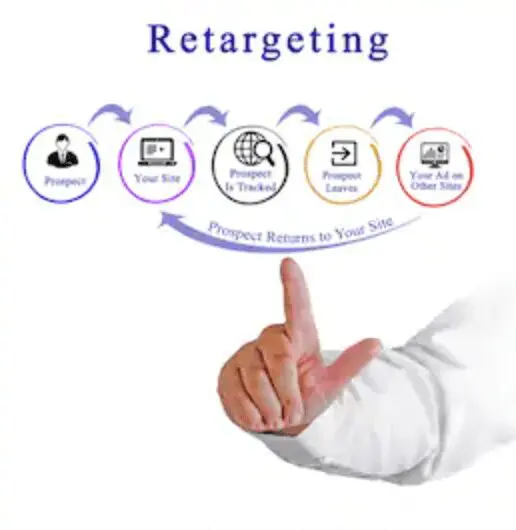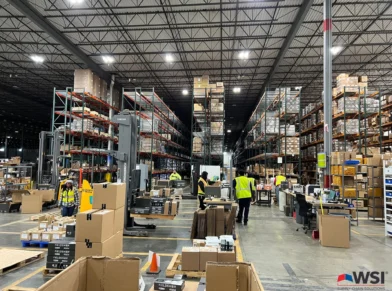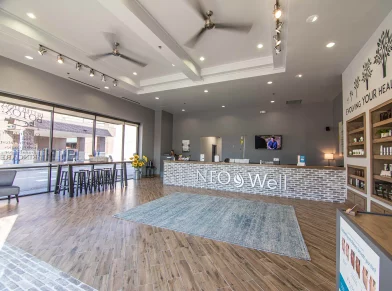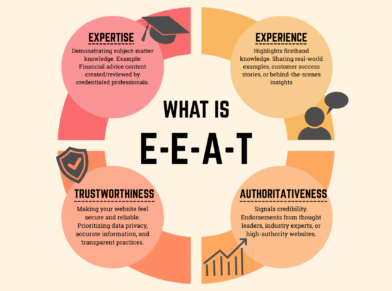Holiday Season and PPC
It’s the Holiday Marketing Season
With the exception of yearly back-to-college shopping, the winter holiday season is the biggest consumer spending event of the year. Adobe predicts that online sales will be up 2.5 percent over last year—with sales expected to reach $209.7 billion. It may seem too early to be thinking about the winter holidays while you’re still pondering Halloween costumes, but it’s already time to break out the pumpkin-spice and make sure your business doesn’t miss out on a successful holiday season that sets you up for the new year!
Gone are the days when Black Friday signaled the start of the holiday shopping season. Now, that season starts in October. Last year, less than 20 percent of US shoppers intended to wait until after Thanksgiving to start shopping, and 43 percent intended to start before November. What does that mean for you? It means you could miss out on potential customers if you think you still have plenty of time to start your holiday marketing campaigns.
So, where should you be in your holiday campaigns, and is it too late to catch up? Let’s ease your minds first—it’s definitely not too late, but you may need to put everything in high gear! Many businesses have most of their planning and list clean-up done by the end of September and focus on the specifics of their holiday advertising in October, to have it ready to go by mid-to-late-October. Let’s dive into some easy holiday advertising ideas.
Holiday marketing techniques
Use video marketing or webrooming. People love videos . . . and “trying” things. Make your pay-per-click (PPC) ads video ads to raise interest and engage potential customers. Or turn your website into a virtual showroom where customers can “browse” or virtually try your products.
Make online communication a two-way street. Engage with your potential customers on social media and on your website. Try using polls on social media or running contests. Make sure you’re responding to customer interactions on social media.
Be festive! Incorporate holiday themes, images, and puns into your holiday shopping ads. Holiday shopping can be stressful. You can lighten the mood and relieve some stress for your customers with fun and festive ads that give them some of that holiday spirit back.
Retargeted! Ensure you have a comprehensive retargeting campaign. Most people shop; around online before they make a purchasing decision. Making sure that you’re following up on items left in carts and people who stopped by your site but didn’t purchase anything can bring in extra sales.
While you’re at it, don’t forget to make everything you do mobile-friendly. It’ll keep your customers and search engines happy. More and more people are using their phones to make purchases and Google prioritized mobile-friendliness in their search engine ranking algorithms. Feeling overwhelmed? You’re not alone! So are most holiday shoppers. They’re worried about inflation and the supply chain, not to mention the stress of hosting family and friends for the holidays. They’re looking for a shopping experience that removes some of their stress levels and makes their holiday shopping experience run a little smoother so they can focus on their families.
Just like you can make your customers’ holiday season a little more convenient and easy to manage, a full-service digital marketing agency, like Globe Runner, can do the same for your holiday marketing season. Everyone goes into high marketing gear for the holidays, which is why now is a great time to engage in a pay-per-click holiday advertising campaign. Prices of ads do go up during the season, but the payoff is worth it. And agencies like Globe Runner can make sure you get the most for your PPC money. But don’t stop there! Globe Runner can also assist with conversion rate optimization and SEO.
Frequently Asked Questions
Why should you advertise during the holiday season?
Let’s be honest, you should be marketing all year long! But the holidays are a fabulous time to engage your loyal customers and bring in new ones. It is, without a doubt, one of the busiest (and most profitable) shopping seasons of the year. The question is really, why wouldn’t you advertise during the holiday season?
When should you start advertising for the holiday season?
Supply chain issues over the last few years made people nervous about waiting to purchase gifts. And they’re worried that inflation will keep increasing prices. While the weekend after Thanksgiving used to signal the start of the holiday shopping season, it now starts in mid-October. Which means you should be advertising now! But it’s not too late to put together a stellar holiday advertising campaign and make the most of the holiday season!
SEO vs SEM vs PPC: What’s Best for Your Business?
Why Digital Marketing?
Have you Googled yourself lately? How do you rank when you search for those ever-important keywords that define your business? It doesn’t matter how amazing your company, services, or products are, your business will never be a success if no one knows about it—and the vast majority of people start their search online using a search engine such as Google. While different analyses turn up slightly different results on the importance of digital marketing, one thing is clear, if your company isn’t on page one of search engine ranking pages (SERPs), there’s less than a one percent chance that someone will click on your website. And over 30 percent of clicks will go to whichever site is number one on that first page. With that in mind, your digital marketing plan is critical to your success. There is no one-size-fits-all digital marketing strategy—and your strategy team should be able to help you determine what’s best for your business and goals. Let’s break down a few of the more common terms you’ll hear when it comes to digital marketing and how they may be helpful to you. Based on your specific goals and budget, you may want to incorporate all of them into your overall strategy or pick and choose.
Search Engine Optimization (SEO)
SEO is incredibly complex and ever-changing. Just as you think you’ve got it all figured out, algorithms change, and so does your strategy. Many businesses still think that populating their websites with some important keywords will do the trick—and that absolutely may have been the case in 1998, at the advent of Google search. But ensuring top search rankings is now a multi-faceted, ongoing, and key part of your overall marketing strategy incorporating (among other things):
- Technical SEO—all the technical aspects of your site that make it more visible in searches, including site architecture and speed, sitemaps, and link structure
- Off-Page—elements off your site that build its popularity and ranking, including link building, reviews, and guest posting
- Content Optimization—everything on your page that keeps it at the top of SERPs, including content, keywords, and usability
Using a professional digital marketing agency like Globe Runner ensures that you’re constantly getting the best results without falling into common errors and traps, such as not having a sitemap, lack of internal links, or focusing on the wrong traffic or keywords.
Pay-Per-Click (PPC)
PPC is exactly what it sounds like and is an important part of directing traffic to your site. In the simplest of terms, PPC is the placement of digital advertisements for which you pay each time the ad is clicked on. There are multiple ways that PPC advertising works including:
- Flat-rate—paying a flat fee for each click
- Bid-based—placing a bid for an advertising space (highest amount they’re willing to pay) and each time a user triggers the ad slot, an automated auction occurs and the winner gets the ad slot.
While there are many strategies for this type of bid-based PPC, two of the most common are:
- Cost Per Click (CPC)—sets a cost per click that you are not willing to go over
- Return On Ad (ROA)—sets a target return on conversion (set as a percentage, e.g., if you are trying to make 2 dollars for every dollar you spend on advertising, your target ROA is 200%)
Search Engine Marketing (SEM)
SEM and PPC are both paid methods of increasing your SERP placement. The main difference is that SEM focuses specifically on marketing through search engines. PPC can fall under SEM, for instance, if you purchase a PPC ad on Google search, that’s also SEM.
With all aspects of digital marketing, the best results come from bringing in the experts. Globe Runner is a Google Partner, meaning that multiple digital marketing experts are certified in Google AdWords and they continuously meet Google’s performance standards. That technical expertise is a necessity, but while understanding all the technical ins and outs of digital marketing and SERPs is absolutely critical to your digital marketing success, the creative aspects of digital marketing are just as important. That’s why Globe Runner’s team includes experienced copywriters and visual designers to ensure that the creative aspects of your marketing are as extraordinary as your business is.
FAQs
What is the difference between PPC and SEO?
Pay-Per-Click (PPC) advertising and Search Engine Optimization (SEO) are both strategies used to drive traffic to your website and boost your online presence and sales. SEO relies on expert optimization of your website (as well as off-page strategies) to drive organic traffic by ensuring your website ranks high up in search engine results. PPC drives traffic to your website through digital ads that you pay a publisher a fee to each time your ad is clicked on. While, technically, SEO is the “free” option, optimizing your website to drive organic traffic to it takes incredible knowledge and expertise, as well as taking time—over months—for the optimization to start showing results.
What is the difference between SEO and SEM?
While Search Engine Optimization (SEO) and Search Engine Marketing (SEM) are often used interchangeably (and SEO is still sometimes considered a part of SEM), they are two different sides of the search engine results coin. At the most basic level, SEO uses organic methods to increase your search engine results ranking and SEM uses paid methods.
Is SEO part of performance marketing?
Performance marketing is an umbrella term that includes any strategy in which advertisers or marketing companies are paid based on performance—such as a click, sale, impression, etc. While, technically, SEO does not fall under that umbrella since it is organic, it is an integral part of your overall digital marketing strategy, and many experts consider it to be a part of a performance marketing strategy.
How do you rank on Google?
The answer to that question is not only complex, but it changes frequently. Search engines base their results on algorithms that are stringently tested and updated on a regular basis. In Google, search engine results incorporate many different factors including relevance, keywords, page quality, E-A-T (expertise, authoritativeness, trustworthiness), page usability, and context.
Tips on Launching a Retargeting Ad Campaign
If you’ve ever visited a website to research a product, then later see an ad pop up for that exact product, you haven’t just experienced an amazing coincidence. No, you’ve just experienced the magic of retargeting.
Retargeting works on the premise that you can reach consumers when they are ready to make a purchase. Sure, purchasing online makes window shopping easy, but it also means buyers can get sidetracked more easily by an email, IM, phone call, crying baby, knock on the door, etc. However, if they’ve lost their attention, don’t worry; retargeting will get it back.
In the event you’re wondering whether retargeting is worth it, consider this—according to several studies, the average conversion, or purchase, rate for ecommerce websites is only around 2%. That means for every 100 visitors to your site, you’ll make roughly 2 sales. That’s a lot of lost revenue due to attention span interruptions. Without retargeting, you’re hoping those 98 come back. Hope is a bad marketing strategy.
Here’s how retargeting works
Retargeting works by placing a piece of code (AKA pixel) on your website that drops a cookie into each visitor’s browser. So, when they’re browsing on the Internet, they’ll see an ad for your website. Again, it’s not magic; it’s smart marketing. Also, it’s immediate. The second they leave your site, they’ll begin seeing your retargeting ads on sites that host native or display ads.
There are a number of advertising vehicles from which to select if you’re interested in launching a retargeting campaign. There are a slew of vehicles, including Facebook, Instagram, and LinkedIn, to name a few. And then there’s Google Ads, the granddaddy of them all. Google shows your retargeting ad(s) across its vast Google Display Network, which boasts well over 2 million websites.
If you’re ready to enter the world of retargeting, consider the following tips to help ensure you get the most from your retargeting campaign.
Too much is too much
Yes, it’s exciting knowing that you can track website visitors around the Internet and flash your ad in front of them. However, showing that ad too much can actually reduce its effectiveness, not to mention it will cost you more. If they see your add too much, it no longer carries the weight that it does if they see it sparingly. How to fix this? Cap the number of times a visitor can see it in a time frame of your choosing. You can set daily, weekly, or monthly limits, and by ad level, ad group, or per campaign.
If you’re running multiple campaigns, you may want to choose a maximum number of impressions one visitor will see. Remember the info about visitors seeing too many ads? This can apply. Note that the word can is in italics because there’s a good chance you’re running different ads and messaging per campaign. If you set the maximum number of impressions that a single visitor can see in a week, multiply that by the number of campaigns you’re running. That’s the real number of impressions.
Segment your Audience
Think about who is visiting your site—men, women, age, parental status, household income, etc. Consider where visitors are going on your website based on these demographics, along with where they probably are in the buying cycle. Sure, you can run a retargeting campaign that attracts anybody who has visited your website, but that’s not going to convert into sales like a campaign targeting particular demographics. You probably have a pretty good understanding of the types of visitors to a page and the products they’re interested in. Then, craft your retargeting campaigns and messaging to better address particular needs and interests. Is a 55-year-old man checking out a pair of Vans checkerboard shoes. Probably not.
In the event you’re asking yourself How does Google know an Internet browser’s demographics?, it’s a good question. Here’s the answer. Google makes assumptions about all of us based on where we go on the Internet, what we purchase, and a spate of other things. Google gleans information about all of us from our interactions with sites on their display network. On mobile devices, Google does the same and also gets demographic data based on applications users’ access.
Retarget ads based on visitors’ behavior

Basically, there are 2 kinds of people who visit your website: ones interested in what you have to offer, and all the others. We’ll call them uninterested. Why pay for ads to target them? If they spend a few seconds on your site, are they interested enough for you to spend ad dollars targeting them? Probably not. You want your ad to be seen by the ones who visit several pages, peruse a variety of products, and spend time on your site. They’re the ones with good intentions and the ones you want to see your retargeted ads.
Campaign Duration
This will require a bit of testing on your part. For a conversion campaign, it’s a good idea to run ads for the length of the sales cycle. And, of course, this will have to adhere to your budget. However, you may find that running a campaign the length of a predetermined sales cycle may not be the best use of ad dollars in the event the metrics indicate that the campaign has lost its steam. And, once again, target certain demographics. If you spray and pray you’ll exhaust your budget much faster. If you’re selling men’s shoes, what’s the point in targeting women? Actually, bad example; women buy men’s shoes more often than men. Maybe a better example is fishing rods or camping gear.
Also, you can set up campaigns seasonally to kick off and end on predetermined dates. For instance, if your company hangs Christmas or holiday lights, you’ll want to spend your marketing dollars during that desirable advertising window.
Don’t set-it-and-forget regarding your creative
If you’re experiencing dwindling success from your retargeting ads, ask yourself one simple question: Am I running the same ad? If you change up your ad copy, that’s great, but change the look, as well. Remember that stuff about visitors getting tired of seeing your ad? Well, maybe it has to do less with seeing your messaging and more about the experience. If they’ve seen too much of the same thing, you’ll lose their attention. Well, grab it back with something different. You’ll probably be surprised how this will buoy your results. Sure, it’ll take a little more work, but it will pay dividends.
Speaking of creative, get familiar with all the ad sizes you’ll need to consider. Take advantage of your resources; Google provides great information that will remove a lot of the mystery—Google Image Ad Requirements.
Retargeting ads, like any type of online advertising, is a great tactic to include in your digital marketing strategy. But it’s not a set-it-and-forget it proposition. It takes time and effort—and ongoing monitoring—to get the results you’re looking for, both in sales and the most efficient use of your advertising budget.
Contact the experts in online advertising
If you need help with your online marketing efforts, Globe Runner is the partner you’re looking for. We are here to help inject your digital marketing initiatives with rocket fuel and launch it to success. If you’re ready to blast off, call us at (972) 538-0260 for a free digital marketing consultation.
Law Firm PPC for Attorneys
Pay Per Click (PPC) Services for Lawyers
If you’re not satisfied with the search results your law firm’s website is getting, you might want to consider another option: pay per click (PPC), also called paid search advertising. If your field of specialty is particularly competitive, you may have found that your SEO efforts aren’t achieving the results you’re after. You may want to consider PPC advertising to supplement the traffic organic search brings to your site.’
Types of Search Results
There are two types of search results: organic and paid. Organic refers to search results you don’t pay to acquire. If your SEO, blogging and listings are enough to get your website premier search results, that’s fantastic. If not, PPC can help get you more visibility in search engine page results.
When you do a Google search, there are several results at the top of the page with a small “Ad” designation. Those are “Google Ads” paid search results, which is Google’s paid search advertising platform. (While other search engines, like Yahoo and Bing, have similar paid search vehicles, here, we focus on Google Ads because almost 80% of searches are conducted via Google.)
How Paid Search Works
PPC advertising involves an auction, with you (and your competitors) bidding on keywords (e.g. Dallas Estate Planning Attorney). If, when, and where your ads appear in a Google search is determined by your Ad Rank, which is calculated by your maximum cost-per-click bid (the highest price you are willing to pay for a click on your ad) and your ad’s quality score.
Obtaining page one results from paid search advertising takes more than simply outbidding your competitors. If your max bid is $2 and your quality score is the highest of all bidders in the auction, your ad might appear higher than an ad with a $6 max bid but a lower quality score. You are only charged when a viewer clicks on your ad and is directed to your website. Quality score plays a big role in determining ad position.
How is Quality Score Calculated?
Quality score is a measure of the quality of your ad and its landing page, relative to the keyword. Ad quality is determined by factors such as expected click-through-rate, the ad’s relevance, and the landing page experience, which includes relevance, page load speed, and usability on mobile devices. The bottom line is, you can’t buy your way into the top position on Google Ads. You must optimize your ads and your website to be successful with PPC. In short, the higher the quality of your ads and landing pages, the better the return on your investment (ROI).
PPC advertising certainly isn’t a set it and forget it proposition. Each time someone performs a search, a new auction is conducted. Advertisers adjust bids, ad spend, ads, and other factors on a daily basis. And in an effort to improve their product and stay on top, Google updates, revised and changes Ads continuously. So, what worked well last week might produce different results today.
LAW FIRM PRACTICE AREAS WE OFFER LEGAL MARKETING SERVICES FOR
Bankruptcy
Business Law
Business Litigation
Child Custody
Civil Litigation
Corporate Law
Criminal Law
Divorce
DUI/DWI
Estate Planning
Family Law
General Practice
Health Care
Immigration
Labor and Employment
Landlord and Tenant Law
Libel, Slander and Defamation
Medical Malpractice
Medicare and Medicaid
Personal Injury
Real Estate
Social Security Disability
Wills and Probate
Workers Compensation
For more information about PPC for attorneys, contact the law firm marketing experts at Globe Runner. We specialize in helping law firms get the most out of their paid search advertising dollars.



NAVIGATING EFFECTIVE PAID ADS WITH FACEBOOK’S CREATIVE COMPASS
Imagine you’re invited to a networking event. When you get there, you discover that it consists of various businesses shouting over one another. If you’ve ever attempted to increase your Facebook visibility organically, you know the feeling.
Paid Facebook ads, on the other hand, give your business a platform, acting like a microphone that airs over the loud speakers of your target audience’s personal computer.
Hoping to expand your business this year? Facebook is piloting some new diagnostic tools that promise to do just that…eventually.
Facebook’s Creative Compass
Creative Compass aims to give creatives valuable insights into the effectiveness of their ads. While currently only available to select agency partners, Facebook is planning a larger roll out for all users this year. The more you know in advance, the faster your business will be able to adopt this ad-changing technology.
The diagnostic tool was built to assess key elements including the visual aspects of an ad, how well it fits with the target audience, the brand association, and message comprehension. The end result is an easy-to-interpret scorecard that takes user behavior to a new level of understanding.
You’ll still have access to your standard click-throughs and conversions information, but they’ll be supported with additional data like a relevancy score for 13 individual categories from noticeability to CTA.
Marketers will then have the ability to update ads or create new campaigns armed with deep insights on the emotional reward users get from the ad. With this knowledge, Facebook aims to make it easier for advertisers to anticipate, understand, and increase the likelihood of a user taking action because of an ad.
Facebook Advertising Best Practices
Until the Creative Compass becomes fully available to everyone, what can you do in the meantime to bolster the effectiveness of your Facebook ads?
Glad you asked.
The best place to start is to determine your goals.Are you after more web traffic? Increased engagement on your Facebook page? More email sign-ups for your newsletter? New leads for your marketing agency? Get clear on your end goal from the beginning to structure your ad appropriately.
Some campaigns may simply be about getting more likes to your Facebook page. That’s nothing to sneeze at!
Others will send browsers to a specific page on your website, where you’ll be ready to sell them on your outstanding products or services.
Some other Facebook ad best practices include:
- Using high-quality photos that are owned by you. Avoid stock photos when you can and try to capture original images that you own the rights to.
- Creating a captivating call to action. Be it a button on your ad or a clever turn of phrase, make sure to dangle the bait in an irresistible way.
- Being selective about what you advertise. You already run the risk of users becoming tone-deaf to your ad. Save your juiciest pieces of company news, blow out sales, and heart-palpitating giveaways for your paid ads to give them extra staying power.
- Checking for typos! We shouldn’t have to say this, but we do. You also need to keep it short, sweet and focused with perfect grammar to boot. Nothing turns a potential customer off faster than a wall of words full of the wrong ‘there.’
That’s the long and the short of it. If you don’t feel like you’re a Creative Compass expert, no need to fret. We’ll show you the way.
MUST KNOW PAID SEARCH STATS AND TERMS
PPC could easily be rebranded to PTP – pay to play. That’s where online advertising is and has been heading for the past few years. But succeeding in this digital playing field is more than a roll of the dice. This is a game of strategy.
If you’re ready to run successful PPC campaigns, let these terms get you up to speed. If you’re still on the fence, let these paid search stats do the convincing.
PPC Terms
Good game players know they have almost zero chance of being a worthy component if they don’t fully understand the premise. Though there may be many routes to winning, you first need to make sure you’re speaking the same language.
This glossary of PPC terminology can help.
AdGroup: Manually created subdivisions of the same overall campaign. Each can be set up and sorted by themes such as product type or keywords.
Average CPC: Is the average of what it costs you every time a user clicks on your ad. This figure is the cost of your ad divided by the number of clicks in a set timeframe.
Bounce rate: Users who land on one page of your site and leave it immediately make up your bounce rate percentage. The lower this number, the better.
Broad Match: PPC ads that are shown to a user based on their search and your targeted keyword.
Click-through-rate (CTR): A percentage showing the number of times your ad has appeared to users in relation to the number of times that same ad has been clicked. A high CTR means your copy and keywords are resonating with users. Lower CTRs require some investigating into the user’s behavior and effectiveness of your ad.
Daily Budget: An amount you feel comfortable spending on PPC ads each day.
Geo Targeting: Target areas at the country, state, and zip code level that you want your ad shown to.
Impressions: How often your paid search ad shows up online. These are usually higher than your click through rates, but with repetition and time, they can help spread brand awareness.
Keyword: The word or phrase a user searches for that also aligns with your products and services.
Remarketing: Ads that appear to a user who has previously landed on your site. Ads can be further targeted based on the portion of your site they viewed.
Once you’ve committed these ABCs to memory (or bookmarked the page to refer back to), we recommend brushing up on the paid-per-click statistics that can help make you a better marketer.
2019 PPC Stats
According to Invesp the average person is served over 1,700 banner ads per month, but only half of them are ever viewed. This is just one example of a statistic that can put paid search into perspective and help you shape your strategy accordingly.
Here are 10 others we think are worth noting as you continue on your PPC pilgrimage.
- 3.5 billion Google searches are made every day. (Internet Live Stats)
- Businesses make an average of $2 in income for every $1 they spend in AdWords. (Google)
- Search ads can increase brand awareness by 80 percent. (Google)
- The top 3 search results get up to 35% more clicks than their first page competitors. (SmartInsights)
- By 2019, mobile advertising is expected to represent 72 percent of all U.S. digital ad spending. (MarketingLand, 2018)
- 33 percent of internet users find display ads completely intolerable. (Adobe)
- Consumers are 27 times more likely to click on online video ads than standard banners. (CMO)
- When local search ads (LSAs) are present, 25.3% of all clicks are on paid results. (Bright Local)
- Roughly a third of all mobile Google searches are related to location. (Blue Corona)
- The average cost-per-click on Bing is $1.54 and the average CPC on Google is $2.69
Key takeaways include: advertising with location, location, location in mind. Running PPC campaigns on the less competitive and cheaper, Bing. And utilizing video to make your pitch.
So there you have it. Think of your paid search ads as pawns in a battle of wits. It’s your goal of increasing conversion rates verses their discerning attention.
Need a little help putting your campaign together? Let us do the work for you!
INSTA IN APP PAY
Have you ever seen a selfie of a friend (or celebrity) on social media and immediately wanted to comment, “Where did you get that shirt?” Or noticed a single knick-knack in a composed lifestyle shot and been frustrated when you couldn’t seem to find that one item on the retailer’s website? Or overall just wished that you could tap on a photo of something (anything!) and have the option to ‘add to cart’? If you answered yes to any of those questions, we’ve got good news for you: Instagram has introduced online shopping and in-app payments on their platform!
In this video, we’ll discuss “image-based shopping” and what it can mean for retailers. We’re especially intrigued by the idea of ensemble shots, in which an interested viewer can click on individual items in a photo to learn more details about each, or simply buy everything all at once. Now, the technology for doing so isn’t quite here yet (at least not for ALL Instagram users), but we can definitely see marketing trends headed in this direction. It’ll be a relatively new way for ordinary people to make purchases, as well as a new revenue stream for marketers and our clients to explore.
GOOGLE ADWORDS EXPANDED TEXT ADS – HOW ARE THEY CHANGING PAID SEARCH?
Earlier this year, Google announced expanded text ads that would change the way PPC advertising would work. The main change is that instead of having a 25-character headline with two 35-character descriptions, you’d have two 30-character headlines and an 80-character description to play with.
So what effect does this have on PPC advertising? There are a few things that you’ll need to keep in mind.
Uniformity Across Devices
One of the goals of expanded text ads is to make advertising more uniform across devices. Previously this year, Google cut out side ads on desktop, removing some of the distinction between mobile and desktop devices and—incidentally—allowing more space for ads. This was a natural lead in for expanded text ads.
More Words, More Freedom
Ultimately, expanded text ads allow for nearly 50% more text, and the structure changes somewhat. This doesn’t just mean you’ll have more room to convey your message—you’ll also need to restructure your ads to make the best possible use of the new format.
Some of the rules remain the same. Your headline will most likely be read first, and the description last (if at all), just as before. But now that you have two headlines, you’ll be able to incorporate more information, a stronger call to action, more engaging wording, etc.
You’ll also need to prioritize what goes where, since the first headline will almost certainly be noticed, but the second headline (depending on the device and the length) may appear on a second line or even be truncated.
Mind Your URL
Another change that has been made is the way your URL is displayed in the ad. Expanded text ads extract the display URL from the final URL, which you can then customize with up to two paths tacked on to the end. It’s best to match these paths to your ad’s keywords to make it more relevant—and thus more likely to be clicked.
For more information on PPC services, call or contact the office of Accelerate Online Marketing today.
5 REASONS TO RUN SEO AND PPC TOGETHER
When determining their online marketing strategy, many companies feel like they need to opt for either SEO or PPC. After all, they both ultimately achieve the same end—attracting visitors to your site and increasing revenue. Using both might seem redundant.
The truth is it’s not redundant at all. SEO and PPC do reach the same ultimate goal, but they do so by different means. PPC is highly targeted, whereas SEO is more organic, and the two can bolster each other dramatically. Following are five reasons why the two should be combined:
- Expanded data: When researching the effectiveness of keywords, using SEO and PPC helps you figure out what’s most effective by providing more overall data. This lets you quickly figure out what changes to make and increase clickthrough and conversion rates more promptly, making you more agile.
- PPC generates results quickly: Not only does PPC bolster keyword data, but it does so very quickly. This makes it optimal for testing keywords prior to use in an SEO campaign.
- SEO helps find long-tail keywords: Just as PPC helps inform short keywords, SEO can help you gather data on long-tail keywords. It does this naturally, and it can help you improve your PPC campaign with more targeted wording.
- Dominate the results page: A very practical way that PPC and SEO help each other out is by essentially doubling your presence on search engine results pages. Assuming both your ads and your content are well designed, you’ll be able to have organic results as well as paid ads appear on relevant searches.
- SEO can reduce PPC costs: In certain industries, high ranking keywords will demand a large price for PPC. In these cases, it’s more cost-effective to use these expensive keywords for SEO while targeting the cheaper ones in your PPC campaign.
At the end, the two combined add up to far more than either could accomplish independently. Contact the dedicated Digital Rockstars at Globe Runner to learn more about how our Dallas SEO services and PPC services can benefit your business.











